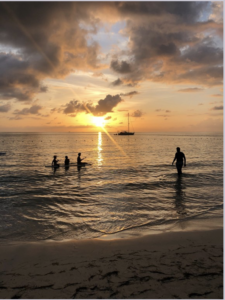Overview
The GTTP sponsors an annual Student Photography Contest. It is open to all students currently enrolled in GTTP schools in GTTP-member countries.
One of the objectives of GTTP’s competitions is to encourage students to communicate clearly because it is an essential skill for anyone who wishes to be successful in today’s travel and tourism industry — or any industry.
The purpose of the Travel Photo Competition is to provide students with an opportunity to practice using visual tools to communicate with other people.
Your task in this competition is to create one photo that can be used to introduce a visitor to your community.”
The reaction you are looking for from a viewer could be “That looks interesting” or “That looks like a nice place “or “It might be interesting to visit there.” The reaction you do not want is “Why am I looking at this?”
Before we discuss preparing to capture that one special image, let us get one thing out of the way, and that is “what equipment to use.”
First of all, a good image depends on the photographer, not the camera, and you probably will not use a camera. By one count, 85 percent of all digital pictures are made on smartphones. More than a billion people carry a smartphone.
And no, you do not need the newest most expensive mobile phone in order to create great images. In addition, mobile phones that can take photos are getting more and more capable and cost less. Then there is the second-hand market for phones and cameras that have been owned by other people. Skill and a good eye for a picture are more important than equipment, and both can be learned. Think of a sport you like: what is more important? Skill? Or equipment?
Of course, it would be wonderful to have the best Canon and Nikon cameras and lenses, or the most expensive Apple and Samsung phones, but, as experienced photographers like to say, “the best camera is the one with you have with you.”
Preparing to create Images: Step 1: Make sure you understand your camera.
Like any tool, it helps to know what your equipment can and cannot do well. However, if you are like most people, you may not have invested much time investigating all the controls of your equipment. You can do this by taking many pictures at different settings. This will help you learn its strengths and weaknesses, and teach you to work with your camera’s strengths and avoid its weaknesses. Work with the equipment, not against it. Here is what that means: smart phones and cameras will not produce good images if you take a picture of something while the sun is shining straight at you. Instead, work with what the equipment can handle well, shoot with the sun shining on either side of you, or behind you.
Above all, read the instructions, be familiar with the controls and what they do.
Also go online and look for sites that will help you learn how to create good images. Try this search term on Google: “taking pictures on your mobile phone.”
Here are some sites:
https://www.digitaltrends.com/photography/smartphone-travel-photography-tips/
https://www.digitaltrends.com/photography/how-to-take-good-photos-with-your-phone/
https://www.nationalgeographic.com/photography/photo-tips/camera-phone-photos/
https://www.mappingmegan.com/camera-phone-vs-digital-camera/
https://blog.hootsuite.com/how-to-take-good-instagram-photos/
However, remember some sites want to sell you something, perhaps an app for your phone or a subscription to a site or service.
Preparing to create Images: Step 2: look at other people’s images
Find an online site you like that has lots of images on. For example, Instagram lets you explore by making it possible to look for images of individual locations, perhaps even including the area where you live. Here is a link: https://havecamerawilltravel.com/photographer/instagram-location-search/
One thing you should not worry about is that you do not live in an exotic place and that therefore there is nothing there that would interest a traveler. Just remember, life is interesting, people are interesting, places are interesting. But also remember that some types have been overused — for example, images of beaches, sunsets and just about every famous place from the Eiffel Tower in Paris to a poor, lone tree in a New Zealand lake.
And here is a quick tip: a carefully planned photograph is by definition is unlikely to be spontaneous. So, include in your planning enough time to experiment taking the photograph from just the right position, and, if possible, experiment with different times of the day in order to get the light just right. Also pay attention to technical competence, which includes images being in focus, correctly exposed and not blurred because you could not hold the camera steady. If there is a horizon in your image, it needs to be level.
Then take your photos. Then pick the best one to enter in the competition.
A final word: you may not realize it, but you are an experienced consumer of images. You see images on social media, TV, in advertisements, in newspapers, magazines, brochures, on computers, camera phones, billboards, noticeboards, and emails. Some of those images engage your attention, many do not. Whether you win or not, this competition can help you understand better how one visual medium can be used, and this knowledge will help you in your career.
Guidelines and Requirements
Prizes:
Three winners in each country will receive the equivalent in their currency of US$100 and all three will be entered in the international completion. First prize in the international competition is US$500. Second prize is US$300.Third prize is US$200.
All winners will receive an official GTTP certificate acknowledging their achievement.
Eligibility:
The photo contest is open to all students in GTTP schools. Your teacher will verify that you are a student in a GTTP school.
You may use a camera-phone, tablet or a digital camera. If a film camera is used, the image must be digitized before submitting. You may use software to edit your work.
Submitting your work:
- Students may submit one digital image (photo). The digital image can be up to 4 MB in size.
- The image should be submitted as a JPEG file with a file name that includes your name and country. For example: “NKim.Kenya.jpeg”.
- The entry form must include a brief caption, not more than 20 words long stating what the image shows, in what country and where it is in that country.
- Submit your entry by email and make sure your image is added as a separate stand-alone file. Do not embed the image file in the entry form.
How we will judge your images:
Each GTTP country will judge its own photos using its own scoring method. A panel of international judges will judge images submitted by member GTTP countries for the international prizes. The international judges will award up to 100 points to each image, and will use the following formula:
- Up to 30 points for technical competence (see reference to “technical competence” in Step 2 above)
- Up 30 points for composition, which means effectively arranging the subject of the photograph within the four sides of the image to create an interesting photo.
- Up to 40 points for the ability of the image to engage the interest of the person looking at the image. Before you submit your photo, ask yourself this question: if someone else had taken the photo instead of you, would you still be interested in the image?
Deadline for entries:
October 31, 2020
GTTP ownership of your photos:
All photos that are submitted become the property of GTTP, and if used in print or electronic media, the student photographer will be credited.








